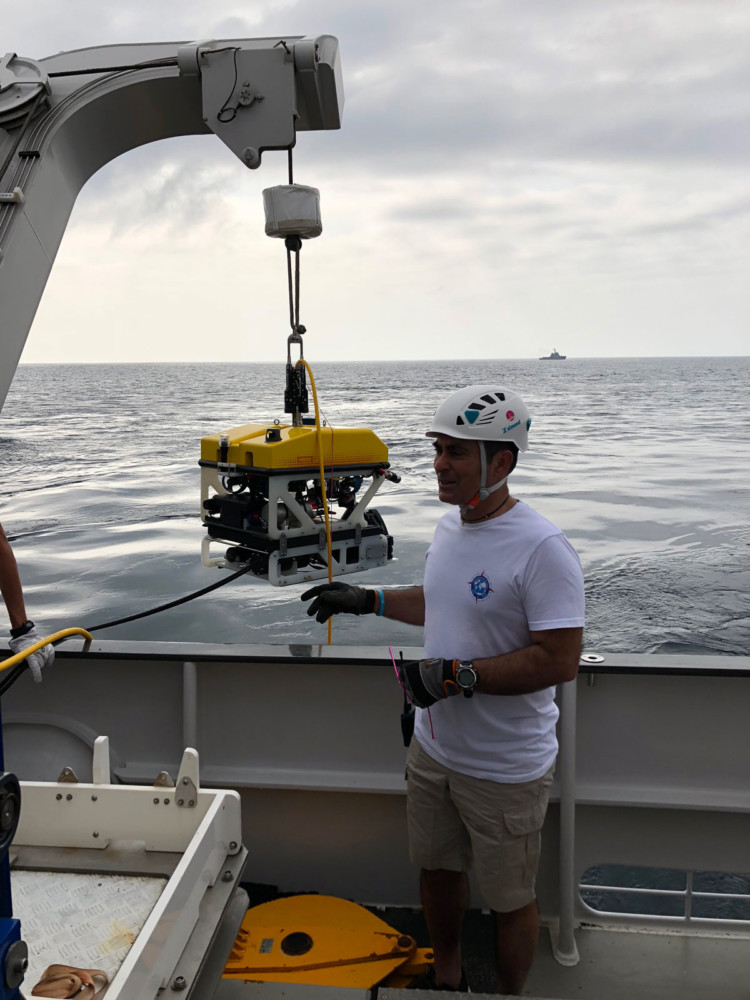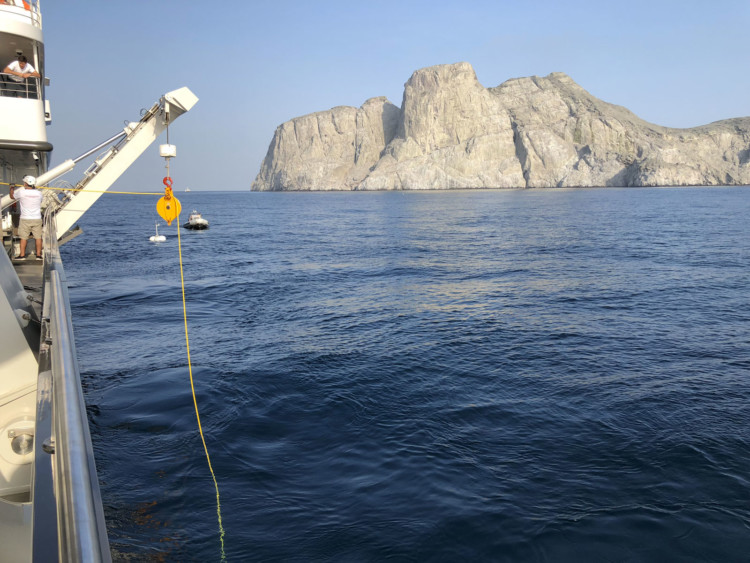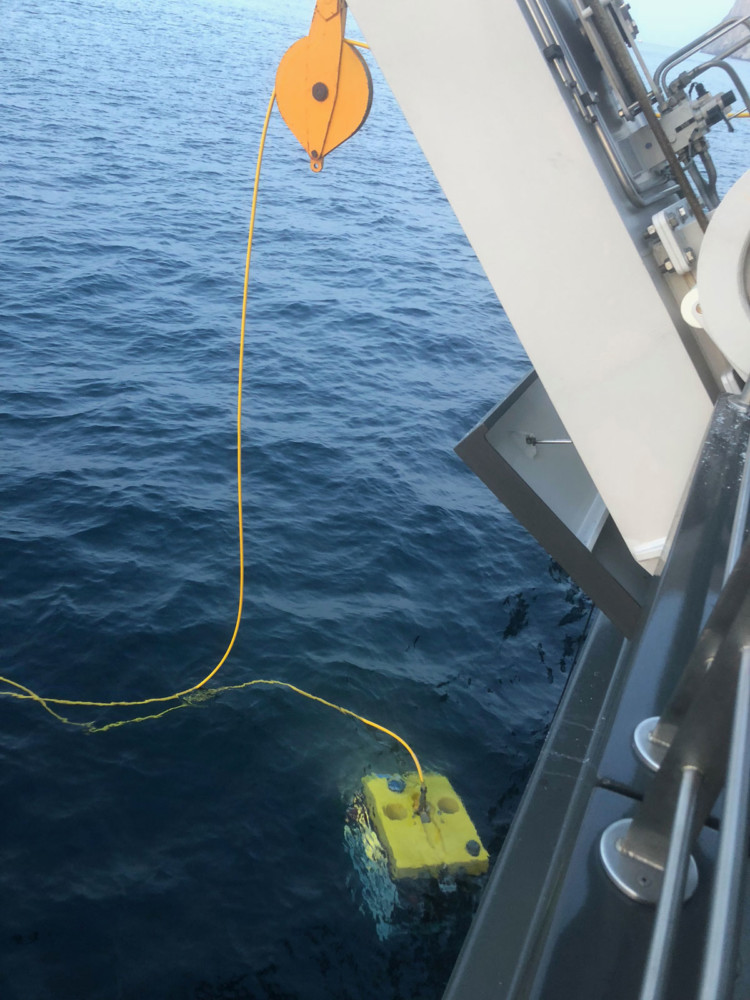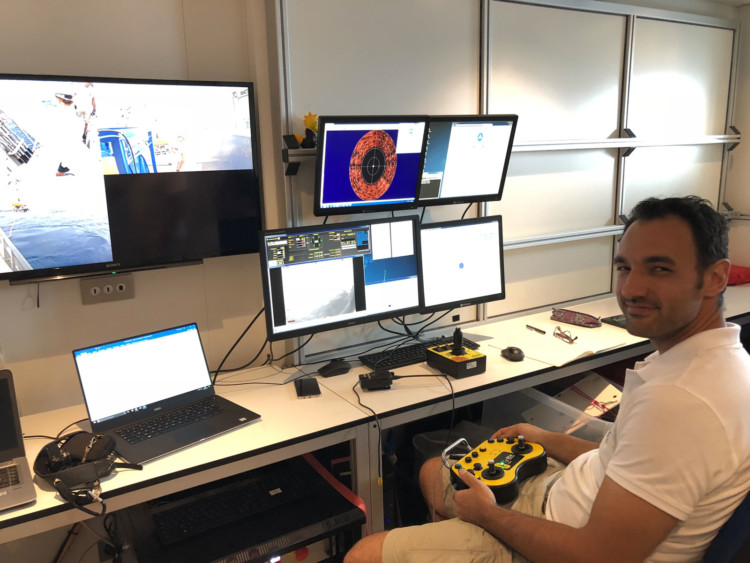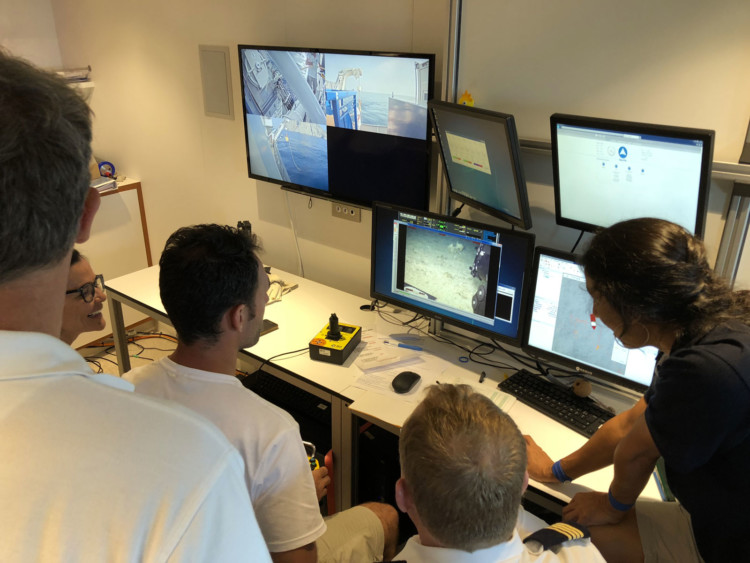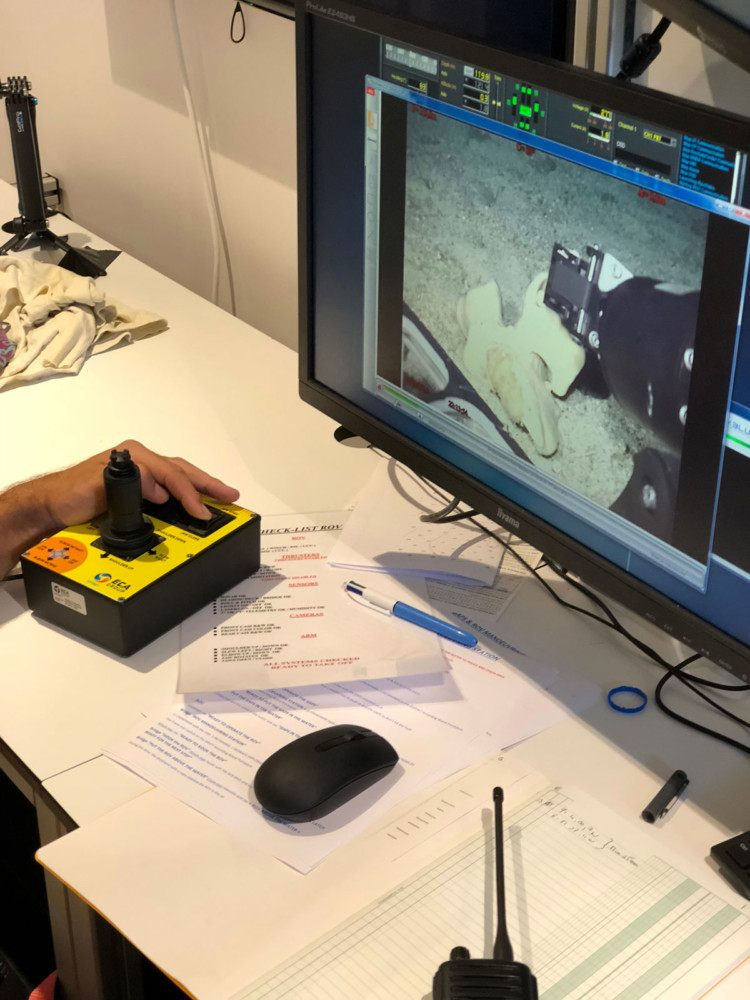
Andrea Polanco and Giomar Borrero are marine scientists from Invemar Colombia (Institute of Marine and Coastal Research) in Santa Marta. They are on this mission in Malpelo with the goal of better understanding the biodiversity and ecosystems of the area through the collection of samples via diving and use of the Remote Operated Vehicle (ROV). Their research will help them know which species exist here and where, and through the collection of specimens they will use barcoding to understand the similarities and differences of the species.
Andrea is a fish taxonomist and deep-sea fish specialist and the curator of fish at the MAKURIWA Museo de Historia Natural Marina de Colombia, which is part of Invemar. Giomar is the curator of Echinoderms at the museum and her research is focused on molecular DNA, invertebrates and Echinoderms (sea stars, sea urchins, sea cucumbers, sea feathers).

In addition to using the ROV to understand biodiversity of deep-sea fauna, the INVEMAR team will work with the Megafauna team to understand their more advanced technologies. In fact, the filters collected here will go back to Colombia with Andrea and Giomar and they will bring them to Montpellier to collaborate with the Megafauna team.
Collecting Samples with the ROV
The ROV we have onboard our vessel is able to go to 1000 meters in depth. Today, it is the first time our 3 technicians will use the ROV and they have decided to make a test at 120 meters. There are 2 technicians on the deck to lower the ROV into the water and manage the crane and cable, and there is one technician in the control room who controls the landing and robotic arm, which collects samples into the ROV’s drawers. Andrea sat in the control room to take screenshots from the ROV’s cameras and to choose which samples to collect. After the ROV is brought back on board, Andrea and Giomar preserve them in the lab.
